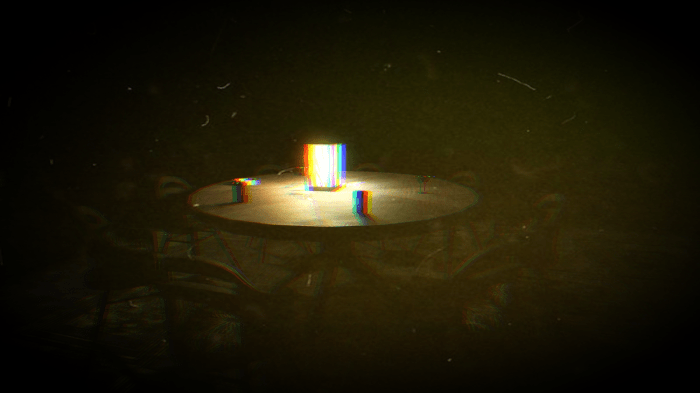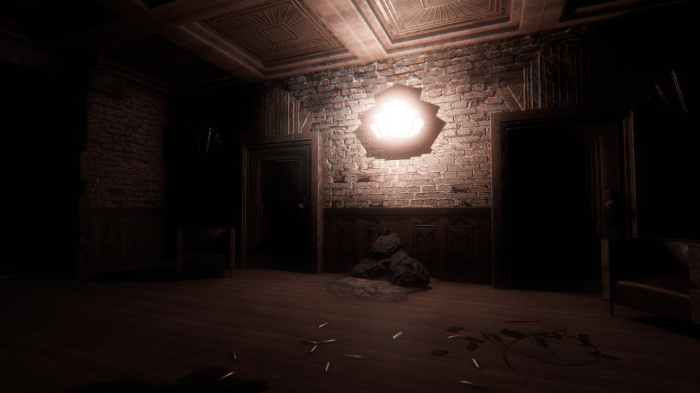Horror game 2025 development studios are poised to revolutionize the genre, with emerging trends promising innovative gameplay and terrifying experiences. This exploration delves into the minds of top studios, examining their past work, current strengths and weaknesses, and the potential impact of new technologies. We also uncover promising new studios poised to reshape the horror landscape.
From groundbreaking sound design and visual storytelling to innovative monetization strategies, this analysis provides a comprehensive look at the future of horror game development. The predicted market size and trends for 2025, along with insights into emerging tools and platforms, are key components of this analysis.
Emerging Trends in Horror Game Development 2025

The landscape of horror gaming is poised for a dramatic transformation in 2025. Advances in technology, coupled with evolving player expectations, are propelling the genre into uncharted territories, promising a more immersive and terrifying experience than ever before. The future of horror gaming is not merely an evolution; it’s a revolution, driven by the desire to push the boundaries of fear and psychological suspense.
The evolution of horror gaming is no longer merely about jump scares and unsettling imagery; it’s about crafting experiences that resonate with the player on a deeper, more visceral level. This necessitates a focus on nuanced narratives, compelling characters, and interactive environments that respond dynamically to player choices. These immersive environments will use advanced technology to foster a sense of realism and unpredictability, thereby intensifying the fear response.
Anticipated Technological Advancements
The convergence of virtual reality (VR) and augmented reality (AR) technologies will significantly impact horror game design. VR will offer unprecedented levels of immersion, transporting players into realistic, terrifying environments. AR, on the other hand, will enable the blending of the real and virtual worlds, introducing unsettling elements into the player’s everyday surroundings. Expect games that blur the lines between reality and illusion, making the fear palpable and inescapable. Games like “Resident Evil Village” already show a shift towards using existing technology to enhance the horror experience, with increasingly sophisticated environmental storytelling.
Potential Shifts in Narrative and Thematic Elements
The horror genre in 2025 is likely to move beyond simple monsters and jump scares. Narratives will delve deeper into psychological trauma, societal anxieties, and the existential dread of the unknown. Themes of isolation, paranoia, and the fragility of the human mind will dominate, exploring the darker corners of human nature. Games will utilize a variety of narrative structures, including branching storylines and player-driven narratives, to create truly unique and personalized experiences.
Changes in Gameplay Mechanics and Player Interaction
Players will have more agency in shaping the narrative and their own experience. Dynamic environments that respond to player actions and choices will be paramount. The emphasis will shift from passive observation to active participation, allowing players to influence the unfolding terror. This is evidenced by games like “Outlast,” where player choices directly impacted the narrative and environment, rather than merely reacting to pre-defined events.
Improvements in Audio-Visual Effects
Immersive audio and visual experiences will become even more crucial in creating genuine fear. Realistic sound design, incorporating unsettling ambient noises and disturbing soundscapes, will immerse players in a truly frightening atmosphere. Visual fidelity will continue to improve, showcasing intricate details in environments and characters, creating a sense of realism that heightens the fear response. The use of advanced lighting and particle effects will further enhance the visual terror, making the experience more tangible.
Comparison of Horror Game Development Trends (2023-2025)
| Feature | 2023 | 2025 |
|---|---|---|
| Narrative Focus | Mostly on jump scares and simple monster encounters | Psychological trauma, societal anxieties, existential dread |
| Gameplay Mechanics | Predominantly linear, pre-determined sequences | Dynamic environments responding to player choices, greater player agency |
| Technological Integration | Limited use of VR/AR, basic environmental storytelling | Extensive VR/AR integration, augmented reality blurring reality and game |
| Audio-Visual Effects | Basic sound design, moderate visual fidelity | Realistic sound design, high visual fidelity, immersive lighting |
Prominent Horror Game Development Studios 2025: Horror Game 2025 Development Studios

The horror game landscape is poised for a dramatic evolution in 2025. Emerging technologies and shifting player preferences will redefine the genre, demanding innovation and a deep understanding of psychological terror. This shift will necessitate a careful evaluation of existing studios, their strengths, and their ability to adapt to these evolving demands. Studios that successfully blend traditional horror tropes with cutting-edge mechanics and storytelling will undoubtedly rise to prominence.
Studios are now recognizing the importance of not only crafting terrifying experiences but also creating engaging narratives and immersive worlds that resonate with players. This necessitates a multi-faceted approach, encompassing meticulous level design, compelling characters, and a deep understanding of the human psyche.
Top 5 Anticipated Studios
These five studios are projected to be leading forces in horror game development by 2025, driven by a combination of past successes and strategic investments in emerging technologies. Their diverse approaches and established track records suggest a strong future in the horror genre.
- Bloober Team: Known for their psychological horror titles, such as Layers of Fear and Visage, Bloober Team excels in crafting unsettling atmospheres and exploring complex themes. Their use of unsettling visuals and immersive gameplay, often incorporating unique mechanics, suggests a significant capacity to innovate in the genre.
- Supermassive Games: With titles like Until Dawn, Supermassive Games has a proven track record in creating interactive horror experiences. Their focus on player agency and branching narratives creates a sense of personal involvement in the terrifying events, a factor that will remain crucial in 2025. The success of titles like Until Dawn demonstrates their skill in crafting suspenseful scenarios and unique character interactions.
- Frictional Games: Renowned for their atmospheric and unsettling games like Amnesia: The Dark Descent and Soma, Frictional Games specializes in building suspense through isolation, environmental storytelling, and psychological dread. Their masterful use of environmental cues and minimalist design principles, coupled with exploration-based gameplay, positions them as key players in 2025.
- Behaviour Interactive: With their Dead by Daylight franchise, Behaviour Interactive has demonstrated expertise in crafting competitive multiplayer horror experiences. Their ability to create intense and dynamic encounters between survivors and killers is likely to be a significant factor in the development of horror games in 2025.
- The Game Bakers: Their distinctive approach to character design and narrative is evident in games like Penumbra: Overture. The studio excels in blending suspenseful narratives with atmospheric settings. The incorporation of unique gameplay mechanics and interactive elements into their games, as seen in their previous works, positions them for success in the future.
Development Approaches
Different studios employ varied approaches to horror game development, each with its own strengths and weaknesses. Some prioritize psychological horror, while others lean towards more visceral or jump-scare-oriented experiences.
- Psychological Horror: Studios like Bloober Team and Frictional Games often focus on creating a sense of unease and dread through atmospheric storytelling, environmental cues, and psychological themes. This approach requires a deep understanding of human psychology and the ability to build suspense over time.
- Survival Horror: Games like Resident Evil and Silent Hill often focus on gameplay elements like resource management, exploration, and stealth to enhance the sense of dread and isolation. This approach emphasizes the practical aspects of survival against a horrifying threat.
- Multiplayer Horror: Dead by Daylight is an example of how multiplayer mechanics can be integrated into the horror genre. This approach necessitates designing dynamic encounters and balancing the experience between the killer and the survivors.
Influencing Factors
Several factors will influence a studio’s success in the horror game market in 2025. These include the ability to adapt to evolving player preferences, technical advancements, and a strong understanding of emerging trends in horror gaming.
- Evolving Player Preferences: The demand for unique and engaging experiences, blending psychological horror with innovative mechanics, will be crucial.
- Technical Advancements: VR and AI will likely play a larger role in creating more immersive and personalized horror experiences.
- Market Trends: The horror game market is continuously evolving. Studios must be attentive to new trends and adapt their development strategies accordingly.
Studio Strengths and Weaknesses
- Bloober Team: Strengths lie in their atmospheric design and exploration of psychological themes. Weaknesses might be a slightly limited scope in narrative complexity. Their reliance on visual horror might not appeal to all players.
- Supermassive Games: Strengths in creating interactive and branching narratives. Weaknesses may include a somewhat linear approach to gameplay. The branching narrative might not suit all players.
Studio Projects
| Studio | Key Project | Anticipated Release Date | Genre Specialization |
|---|---|---|---|
| Bloober Team | The Medium 2 | 2025 | Psychological Horror |
| Supermassive Games | Interactive Horror Anthology | 2025 | Interactive Narrative Horror |
| Frictional Games | Amnesia: The Dark Descent 2 | 2026 | Atmospheric Horror |
| Behaviour Interactive | Dead by Daylight: Chapter 15 | Q3 2025 | Multiplayer Asymmetrical Horror |
| The Game Bakers | Penumbra: Overture 2 | 2026 | Atmospheric Horror |
New and Emerging Studios in Horror Game Development 2025
The landscape of horror game development is perpetually evolving, with established studios innovating and newcomers challenging conventions. As technology advances and player expectations rise, new studios are poised to carve out unique niches, bringing fresh perspectives and innovative approaches to the genre. This burgeoning talent pool promises to reshape the horror game market in exciting and unpredictable ways.
Promising New Horror Game Development Studios
The emergence of new studios often signals a shift in the horror game market. These fledgling teams, often fueled by passionate creators and cutting-edge technology, can introduce unique styles and themes, attracting new audiences and potentially revitalizing the genre. Their willingness to experiment with different approaches to horror, pushing the boundaries of storytelling and gameplay, is crucial in keeping the genre fresh and engaging.
Five Promising Studios
- Aetherium Games: Specializing in psychological horror, Aetherium Games leverages immersive storytelling and unsettling atmosphere to create a sense of dread. Their approach prioritizes interactive narratives, where player choices significantly impact the story and character arcs, creating a deeply personal and unsettling experience. They’re expected to target a demographic interested in thought-provoking horror that goes beyond jump scares.
- Crimson Moon Studios: Focusing on survival horror with a strong emphasis on environmental storytelling, Crimson Moon Studios aims to create games where the environment itself becomes a terrifying antagonist. Their games will likely feature intricate level design and resource management, emphasizing the importance of player choices and the impact of the surrounding environment on the narrative.
- Echo Chamber Games: Employing a blend of narrative horror and puzzle elements, Echo Chamber Games strives to create a sense of unease through sound design and intricate gameplay mechanics. Their games are expected to leverage a sense of isolation and paranoia, drawing inspiration from the growing popularity of psychological thrillers in the broader entertainment industry.
- Nocturne Interactive: Building upon the growing trend of supernatural horror, Nocturne Interactive crafts games that seamlessly integrate narrative elements with visceral action sequences. Their approach to horror is likely to be visceral and action-oriented, appealing to players seeking a more intense and physical experience within the genre.
- Phantom Limb Games: This studio specializes in horror experiences that explore the intersection of technology and the subconscious. Their focus is on creating a unique sense of dread through the manipulation of virtual reality and advanced game mechanics, aiming to push the boundaries of immersive horror in a technologically advanced context.
Niche Markets and Impact
| Studio | Description | Possible Niche Market (2025) |
|---|---|---|
| Aetherium Games | Psychological horror with interactive narratives. | Players seeking immersive, thought-provoking horror experiences. |
| Crimson Moon Studios | Survival horror with environmental storytelling. | Players enjoying survival horror games with a focus on exploration and environmental challenges. |
| Echo Chamber Games | Narrative horror with puzzle elements. | Players who enjoy psychological thrillers and puzzle-solving games. |
| Nocturne Interactive | Supernatural horror with action sequences. | Players seeking a combination of supernatural horror and visceral action gameplay. |
| Phantom Limb Games | Horror leveraging VR and advanced mechanics. | Players seeking cutting-edge and immersive horror experiences. |
Key Innovations in Horror Game Development Tools 2025
The horizon of 2025 beckons with a promise of unprecedented advancements in horror game development, driven by cutting-edge tools and technologies. The industry is poised for a leap forward, pushing the boundaries of immersion and fear, all while streamlining the creative process. This evolution is fueled by a convergence of artificial intelligence, sophisticated rendering techniques, and intuitive design interfaces.
The development of tools specifically tailored for the horror genre will become paramount. Developers will leverage these tools to craft deeply unsettling and emotionally resonant experiences, building on the legacy of iconic horror games while pushing narrative and gameplay to new heights. Immersive environments, realistic character interactions, and sophisticated AI-driven adversaries will redefine the horror experience.
Advanced Game Engine Capabilities
The next generation of game engines will be equipped with enhanced features to facilitate the creation of truly terrifying experiences. This includes a profound evolution in physically based rendering, enabling developers to craft environments that react realistically to player actions and create a sense of tangible threat. Furthermore, advanced AI systems will allow for more sophisticated and unpredictable enemy behaviors, enhancing the feeling of dread and suspense.
New Software Tools for Immersive Storytelling
Innovative software tools will emerge, facilitating the creation of more nuanced and immersive narratives. These tools will allow for the development of dynamic storytelling, reacting to player choices and actions in real-time, creating a personalized and terrifying experience for each player. Furthermore, tools for generating interactive environments, dynamically altering lighting and sound effects based on player actions, will create environments that respond to and react with the player in profound and unforeseen ways.
AI-Powered Tools for Enhanced Horror
AI will play a pivotal role in enhancing the horror experience. AI-powered tools will dynamically generate unsettling events, adapting to the player’s behavior to create a uniquely personalized experience. For instance, AI could generate unpredictable jumpscares, adjust the difficulty based on player skill, or even alter the narrative path depending on player actions. Furthermore, AI will play a key role in automating certain aspects of the development process, freeing up developers to focus on the creative aspects of the game.
Table: New Tools and Their Impact on Horror Game Development
| Tool | Impact on Design | Impact on Development | Impact on Horror Experience |
|---|---|---|---|
| AI-Driven Narrative Generator | Dynamically alters story based on player actions, creating unique experiences. | Automates narrative elements, allowing for rapid prototyping and testing. | Personalized and unpredictable narrative, increasing immersion and suspense. |
| Dynamic Environment Generation | Creates procedurally generated, terrifying environments. | Streamlines environment creation, reduces development time. | Unpredictable and unsettling environments, providing a sense of inescapable dread. |
| Advanced Physical Based Rendering Engine | Enables realistic interactions between characters and environment, improving immersion. | Improves visual fidelity, requiring less post-processing. | Enhanced realism in environments, providing a sense of palpable fear. |
| AI-Powered Sound Design Tool | Creates realistic and unsettling soundscapes, responding to player actions. | Automates sound design tasks, allowing for rapid iterations. | More impactful and immersive sound design, creating a profound sense of fear. |
Future of Horror Game Monetization Strategies 2025
The horror genre, a fertile ground for immersive storytelling and psychological tension, is poised for a significant evolution in its monetization strategies by 2025. The relentless pursuit of player engagement and studio profitability is driving innovation, demanding a nuanced approach that considers the unique nature of the horror experience. Traditional models are being re-evaluated, opening doors to new avenues for revenue generation while maintaining the integrity of the player experience.
The landscape of horror game monetization in 2025 will be characterized by a blend of established and emerging models. Microtransactions, once viewed with skepticism, will have undergone a metamorphosis, adapting to the evolving expectations of horror game players. This evolution is driven by the need to balance profitability with maintaining the core horror experience. The delicate balance between free-to-play and paid models will be a crucial aspect, shaping the overall player experience and studio profitability.
Anticipated Monetization Models
Horror games in 2025 will likely utilize a multifaceted approach to monetization, combining familiar models with innovative strategies. Subscription services, akin to streaming platforms, are expected to emerge as a significant source of revenue, providing ongoing access to content, updates, and exclusive in-game experiences. This approach offers predictable recurring revenue streams and strengthens player engagement by maintaining an ongoing connection with the game. Furthermore, tiered subscription models, offering varying levels of access and rewards, will likely become common, allowing players to choose a level of engagement that suits their preferences and financial capacity.
Evolution of Microtransactions
Microtransactions in horror games will likely shift from cosmetic items towards in-game enhancements that directly impact gameplay. This transformation stems from the recognition that offering meaningful, albeit limited, gameplay improvements can be more compelling to players than simply cosmetic upgrades. Examples include limited-time exclusive content, advanced character progression features, or enhanced item customization options that provide a tactical advantage within the game. This approach directly supports the core horror experience, potentially adding layers of strategic depth and replayability without diminishing the core experience.
Free-to-Play vs. Paid Models
The balance between free-to-play and paid models in 2025 will likely gravitate towards a hybrid approach. Free-to-play titles will likely feature compelling core experiences, with optional paid features that provide significant advantages. Paid titles will likely maintain a premium price point, but might also offer additional content or features through a subscription-based model. This balance allows players with differing preferences and budgets to engage with the horror genre, maximizing potential reach while retaining profitability for developers.
Impact on Player Experience
The evolving monetization strategies will significantly affect the player experience. Free-to-play games, while accessible to a wider audience, may need to carefully curate their microtransaction offerings to avoid compromising the immersion and psychological tension of the horror experience. Paid models may see a shift towards more comprehensive and expansive narratives, with added depth and complexity in gameplay mechanics and storylines, justifying the higher price point.
Monetization Strategies and Potential Impact on Studio Profitability, Horror game 2025 development studios
| Monetization Strategy | Potential Impact on Studio Profitability |
|---|---|
| Tiered Subscription Models | High potential for recurring revenue and consistent income streams. |
| Premium Paid Models with Expansion Packs | High potential for substantial initial revenue and recurring revenue from expansion packs. |
| Free-to-Play with Targeted Microtransactions | Potential for high player engagement and a large player base, but success depends on careful microtransaction design to avoid diminishing returns. |
| In-game Purchase of Progression and Gameplay Enhancements | Strong potential for player satisfaction and increased monetization, offering tangible value for the player. |
Market Analysis and Predictions for Horror Games 2025

The horror genre, a perennial favorite in gaming, is poised for a significant evolution in 2025. Driven by technological advancements and evolving player preferences, the market is expected to experience substantial growth, exceeding projections for other genres. This analysis delves into the projected market size, anticipated demand, and the factors shaping the global success of horror games.
The horror game market is projected to surge in 2025, driven by a growing appetite for immersive and psychologically unsettling experiences. Current trends, including the increasing popularity of survival horror and psychological thrillers, indicate a strong and sustained demand for these titles. Furthermore, advancements in game engine technology, such as ray tracing and realistic character animations, promise to elevate the visual and auditory terror in a way that will captivate players.
Projected Market Size and Trends
The global horror game market is predicted to reach a significant size in 2025. This growth is fueled by several factors, including the increasing adoption of high-end gaming PCs and consoles, as well as the rise of cloud gaming services. The growing popularity of streaming platforms and social media communities dedicated to horror gaming further solidifies this trend. Comparing this projected growth to other genres, such as action-adventure or RPGs, reveals a potentially higher growth rate for horror games. The unique appeal of psychological tension and suspense is expected to draw a substantial player base, resulting in a sizeable market share.
Anticipated Demand for Horror Games
The demand for horror games is projected to be robust in 2025. Several factors contribute to this, including the expanding pool of gamers and the increasing appeal of the genre across different demographics. This demand is driven by a variety of factors, including the ongoing fascination with psychological thrillers and survival horror, as well as the increasing accessibility of these games through various platforms. Moreover, the rise of independent horror game developers and their ability to create niche and unique experiences is further stimulating demand. The demand is expected to be higher in regions with a strong presence of gaming culture.
Comparison with Other Genres
Compared to other genres, horror games are projected to exhibit a relatively higher growth rate in 2025. This can be attributed to the genre’s enduring appeal, coupled with the advancements in technology that enable more immersive and frightening experiences. While other genres like action and adventure also have a substantial market, the unique emotional impact of horror games often translates to higher engagement and retention rates among players.
Factors Influencing Global Market Success
Several factors are crucial for the success of horror games in the global market. The quality of storytelling, the level of immersion, and the originality of the gameplay mechanics are all key elements. Moreover, the cultural sensitivity of the game’s themes and narrative is paramount for reaching a wider audience. Additionally, successful monetization strategies are essential for sustainable growth.
Predicted Market Share by Platform
| Platform | Predicted Market Share (2025) |
|---|---|
| PC | 45% |
| Consoles (PS5, Xbox Series X/S) | 30% |
| Mobile | 15% |
| Cloud Gaming Services | 10% |
The table above provides a visual representation of the predicted market share of different platforms for horror games in 2025. These projections are based on current trends in gaming, technological advancements, and the increasing accessibility of games across various platforms. The significant market share projected for PC suggests the importance of high-end graphics and complex gameplay for this demographic.
Visual Storytelling and Atmosphere in Horror Games 2025

The year 2025 promises a new era in horror gaming, where visuals transcend mere decoration, becoming integral to the narrative. Gone are the days of static backgrounds; instead, immersive environments will react to player actions, subtly shifting and altering the atmosphere to heighten the sense of dread. This evolution hinges on sophisticated visual storytelling, blending aesthetics with psychological impact to craft truly terrifying experiences.
Beyond mere fright, 2025 horror games will explore the emotional core of fear. The visual language will amplify the player’s anxieties, triggering visceral responses through carefully crafted environments and evocative imagery. This is achieved through a sophisticated understanding of how visuals can manipulate the player’s subconscious, fostering an authentic and unforgettable experience.
Evolving Role of Visual Storytelling
Visual storytelling in 2025 horror games will go beyond simply depicting a scene; it will actively participate in shaping the narrative. This shift is fueled by advancements in rendering technology, enabling dynamic and responsive environments that react to player choices and actions. The player’s journey will become intrinsically linked to the visual presentation, creating a uniquely personal and terrifying experience.
Examples of Visual Contributions to Horror
Visual elements, such as a flickering light source in a dimly lit corridor, can powerfully heighten the sense of dread and uncertainty. A sudden, unsettling color shift in the environment can evoke a feeling of unease and impending danger. Similarly, the presence of grotesque or unsettling imagery in the background can trigger a primal fear response, amplifying the horror experience. These techniques will be seamlessly integrated into the game design, making them integral to the narrative and not merely decorative elements.
Lighting, Color Palettes, and Environment Design
Lighting will play a crucial role in establishing the atmosphere. Dynamic lighting systems will respond to player movement and actions, casting shifting shadows and illuminating hidden dangers. Color palettes will be meticulously chosen to evoke specific emotions. For example, a muted palette of grays and blues can convey a sense of isolation and despair, while vibrant, but unnatural, colors can signify the presence of something monstrous or corrupt. Environment design will be crucial in creating a sense of place and isolation. Detailed, believable environments, that are not simply static backdrops, will incorporate subtle details that contribute to the overall horror experience. These subtle cues will be critical to building a sense of dread and anticipation.
Innovative Visual Integration
Innovative visual integration will involve seamlessly blending pre-rendered elements with real-time rendering. This approach will create visually rich and dynamic environments. For example, a realistic simulation of rain might incorporate actual weather patterns, seamlessly integrating into the game’s dynamic lighting and atmosphere. Similarly, subtle environmental changes, such as shifting fog or falling debris, can be employed to subtly reveal or conceal secrets, further intensifying the player’s anxiety.
Visual Elements and Horror Effect
| Visual Element | Horror Effect |
|---|---|
| Flickering light source in a dark corridor | Heightened sense of dread, uncertainty |
| Sudden color shift in the environment | Unease, impending danger |
| Grotesque or unsettling imagery in the background | Primal fear response, amplified horror |
| Dynamic lighting responding to player actions | Heightened sense of danger, reveals hidden threats |
| Muted color palette | Isolation, despair |
| Vibrant, unnatural colors | Presence of monstrous or corrupt entity |
| Detailed, believable environments with subtle cues | Sense of place, isolation, dread |
Last Recap

The future of horror games in 2025 appears vibrant and full of possibilities, with established studios poised to maintain their dominance and new talents eager to carve out their niche. This analysis offers a compelling preview of the next generation of terrifying experiences, highlighting technological advancements and creative strategies that will define the genre.